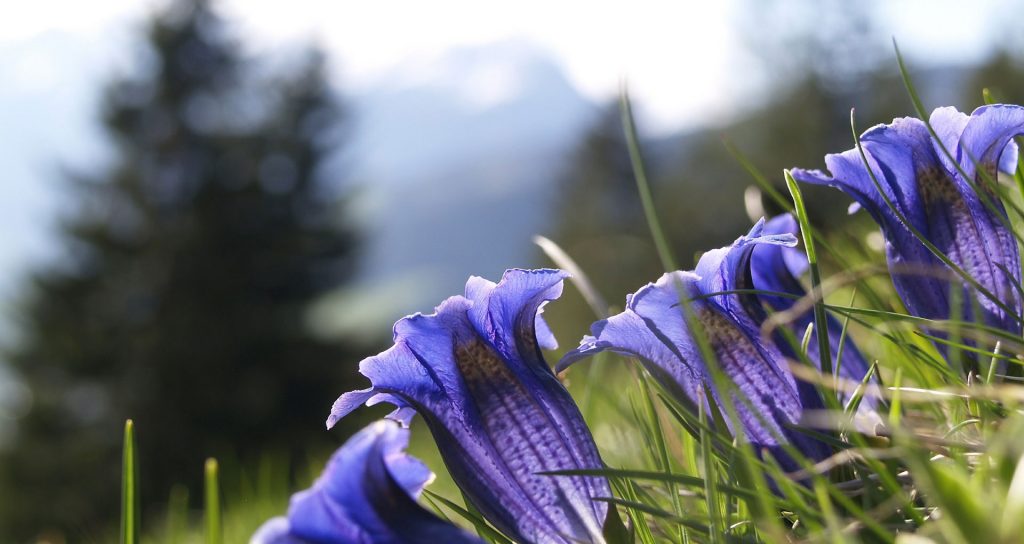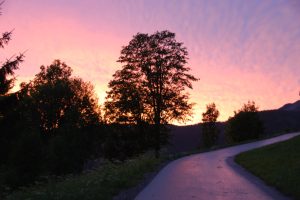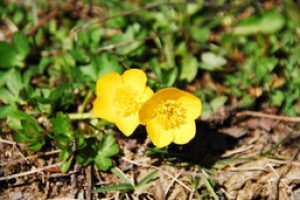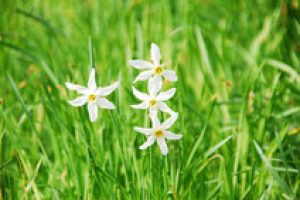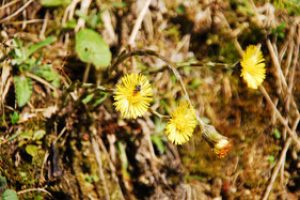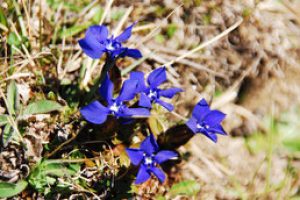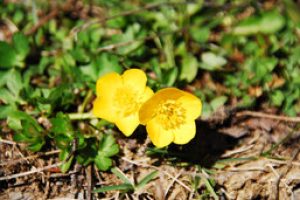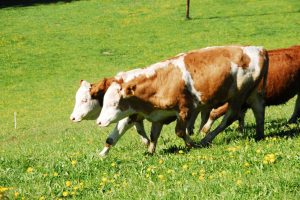Finally – spring is here! The days are getting longer and warmer. Also in the Alps and on the mountain slopes around the FreiraumHütte it is getting green. You can literally feel the awakening of nature. For me this is the most exciting time in the Alps. Nature is changing around the FreiraumHütte. Every day, new, more spring flowers are added, whose concentrated power transforms the landscape into a sea of colours. I would like to briefly introduce a few of these spring bloomers.
Sumpfdotterblume
It belongs to the buttercup family and is widespread in the northern hemisphere. The marsh marigold loves humidity and grows in marsh meadows, springs, shallow streams and ditches. Depending on its location, it can reach a height of 15 to 60 centimetres. Characteristic are the golden yellow flowers, whose colour is reminiscent of egg yolk. Early in the year, from March onwards, they adorn the landscape with their flowering splendour and supply beetles, flies and bees with abundant pollen and nectar.
Spring gentian
In the vernacular also Blitznagerl or sky-stalks called, the smallest Genzianart is widespread far in the Alps and European low mountain ranges. Nestled close to the ground, it flowers, depending on its location, from March to June up to altitudes of over 2,500 metres. Like all other gentian species, the spring gentian is a protected species. Although the flower can be found in abundance in some regions, its survival is considered highly endangered. Therefore, please do not pick any flowers or parts of plants.
Horsesfoot
The coltsfoot is one of the first flowers of the early spring, whose flowers can be seen from the end of February on sunny locations in road embankments and sand pits or on stony ground. The coltsfoot is an important medicinal plant. Hildegard von Bingen was already aware of the healing power of the plant in the early Middle Ages. Thus it helps diseases of the respiratory organs, alleviates cough irritation and has an expectorant effect. In 1994 it was named “medicinal plant of the year” in Germany.
Star Daffodils
The Star Narcissus occurs in the Alps, in the Black Forest, in Italy and in the Western Balkans on freshly moist, nutrient-rich mountain meadows and in light deciduous forests. It thrives at altitudes from 300 to about 1600 metres. Depending on the weather and heat, the star daffodils bloom from mid to late May, transforming the meadows into a sea of white flowers.

